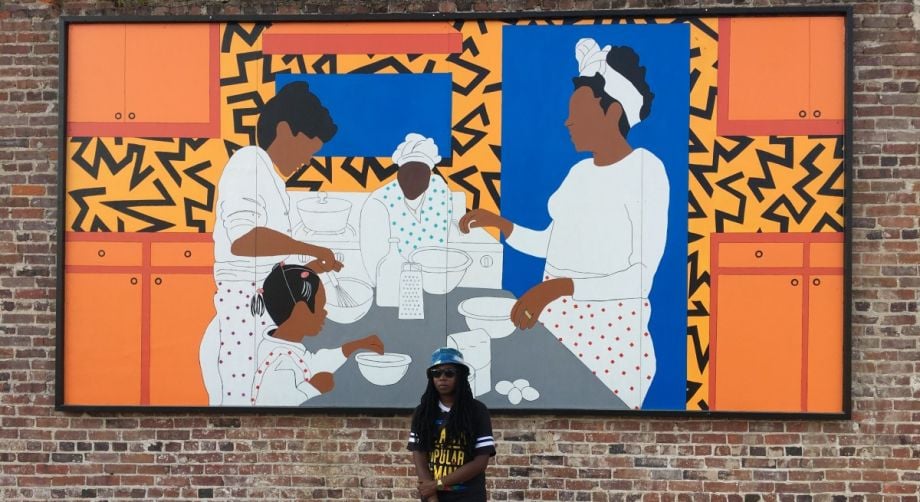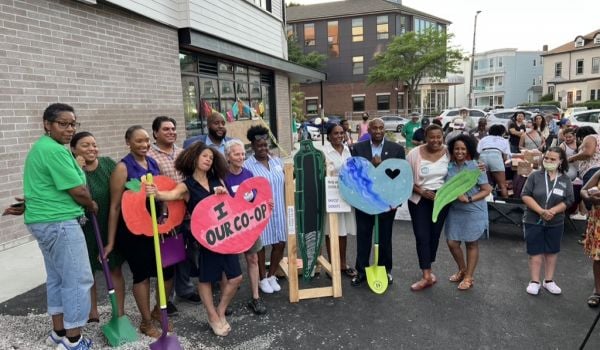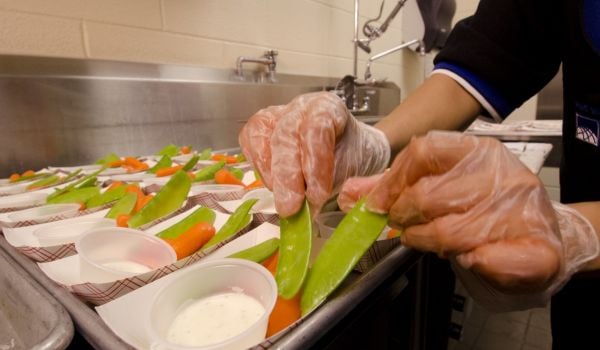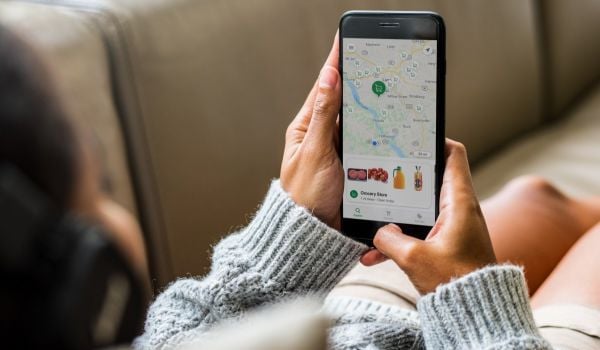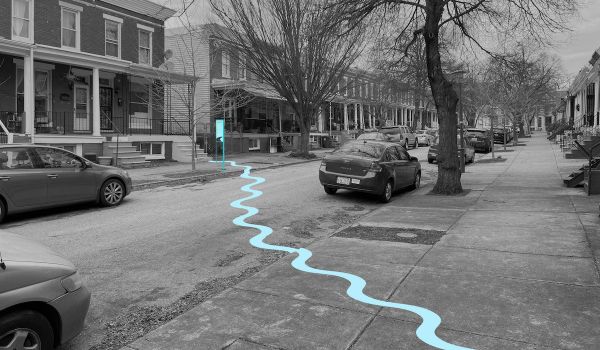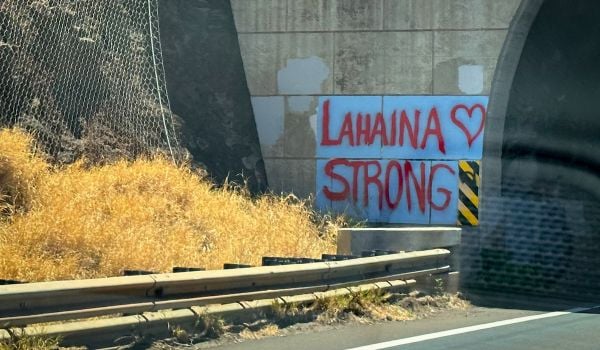When Jackson, Miss. artist Adrienne Dominick was growing up, she loved to help her grandmother in the kitchen. “If I had to choose between hanging out with my grandma or going outside, I hung out with my grandma. She was like my first best friend,” Dominick says. She would walk into the kitchen, don her purple apron, and get to work. Dominick’s grandmother—Grandma Rose—was a fisher and an urban farmer, and back then it wasn’t uncommon to enjoy a meal with her family that consisted of fresh produce. That’s changed, of course, over the past few decades, as food insecurity and income inequality has worsened across the country and especially in Dominick’s hometown of Jackson.
This is what Dominick reflected on when she was asked to provide a concept for a series of public art installations known as Fertile Ground throughout the city of Jackson in an effort to start a public dialogue about the harmful impacts of the industrialization of the American food system. Dominick’s ‘Mama Rose Kitchen’ is one of over 20 works of public art installed in food deserts, and each piece of art touches upon a range of food themes at the cross section of history, community, environment and politics.
“I felt like I wanted to tell [Grandma Rose’s] story,” Dominick says. “But within that, when I think about food access, and when everything was plentiful back then when I was a young girl, it was nothing for the whole family to get together and have food together.” Sharing a cooking experience and a meal is lost now, Dominic says, for a lot of reasons including that parents are busy and food is expensive.
Now, visitors to the Farish Street Historic District in Jackson can reflect on Dominick’s message of food and cooking as communion. The mural depicts three generations of Black women and girls in the kitchen—Mama Rose, Dominick’s mom and aunt, and a young Dominick herself. Cabinets in the kitchen are bright orange and black zig-zag lines contribute to a sense of movement in the painting. Dominick and her elders each hold a bowl, and four eggs rest in the mural’s foreground. But without facial features or other details, the kitchen could be anyone’s kitchen, and the family could be anyone’s family.
“I left the faces blank because I wanted people to see themselves in it,” Dominick says. “It was pretty cool to see people come up to me and tell me their stories of how they felt about the piece. So many people felt like it was them, the people were them, and the little girl was them.”
Salam Rida, one of the creators of the Fertile Ground project, says that the team began working in 2018 to understand what civic issues residents in Jackson were most affected by and concerned about. In preparation for applying for a grant, the team decided that a project centered around food access “could be both interesting from a public art point of view, but then also a good project to unpack around the framework of urban design and urban planning.”
Jackson, a city of 150,000 residents living across 117 miles, suffers from systemic divestment, white flight, and a lack of access to grocery stores that offer fresh produce, regions otherwise known as ‘food deserts.’ And without a robust and affordable public transportation system, those without private means of traveling to grocery stores situated miles away in wealthier, often whiter, neighborhoods, are shut out from opportunities to create healthy meals.
“Food access issues are very complex in the way that they are created,” Rida says. “A lot of the food access issues that we deal with at the city of Jackson, I believe, is partly responsible to the way that the city is actually designed in addition to our transportation issues.” Some of the art installations draw attention to the physical design of the city, situated along the railroad that segregated East Jackson from West Jackson. Scholars have connected the federal practice of redlining to the creation of food deserts.
Rida says that part of the goal of the project was to encourage Jacksonians to connect their experiences of food insecurity to larger systems created and perpetuated by federal investment in industrial agriculture and racist housing policies, among other systemic inequities.
“People realize that it’s more than just oh, there’s not a grocery store in my neighborhood. People are talking about food access issues in a way that we had intended people to talk about it, understanding the complexity of it, understanding the way that geography is a really important concept,” Rida says. The art will remain up for three to four years, and Rida says that she and others who executed the Fertile Ground project created a nonprofit by the same name to build toward future food justice projects.
In addition to helping Jackson residents connect the dots between systems of injustices, the art also helped Dominick connect with her own family. In the process of building the concept and mural design, Dominick reached out to her extended family, some of whom she hadn’t spoken with in years. She looked through photos and heard stories about Grandma Rose she hadn’t before. Through this retelling, there were even stories she realized had forgotten. “I feel like, when my grandmother passed, that died as well—us all getting together, cooking together, eating together,” Dominick says. “The process was very, very healing in a way.”
Ray Levy Uyeda is a Bay Area-based freelance writer who focuses on gender, politics, and activism.

